Thoughts along the way
Art is about the subject, and also about where the artist was at while making it. What kind of day or week or year was it? What did it feel like? What was going on? What was the life of this project? An image is a recording of all of this.
This idea came from thinking a lot about Baphomet and duality and things being more than one thing. Also space. Putting those together happened pretty naturally.
First there’s a pencil drawing. Either on paper-paper or with a digital pencil. Thinking about what there is to say.
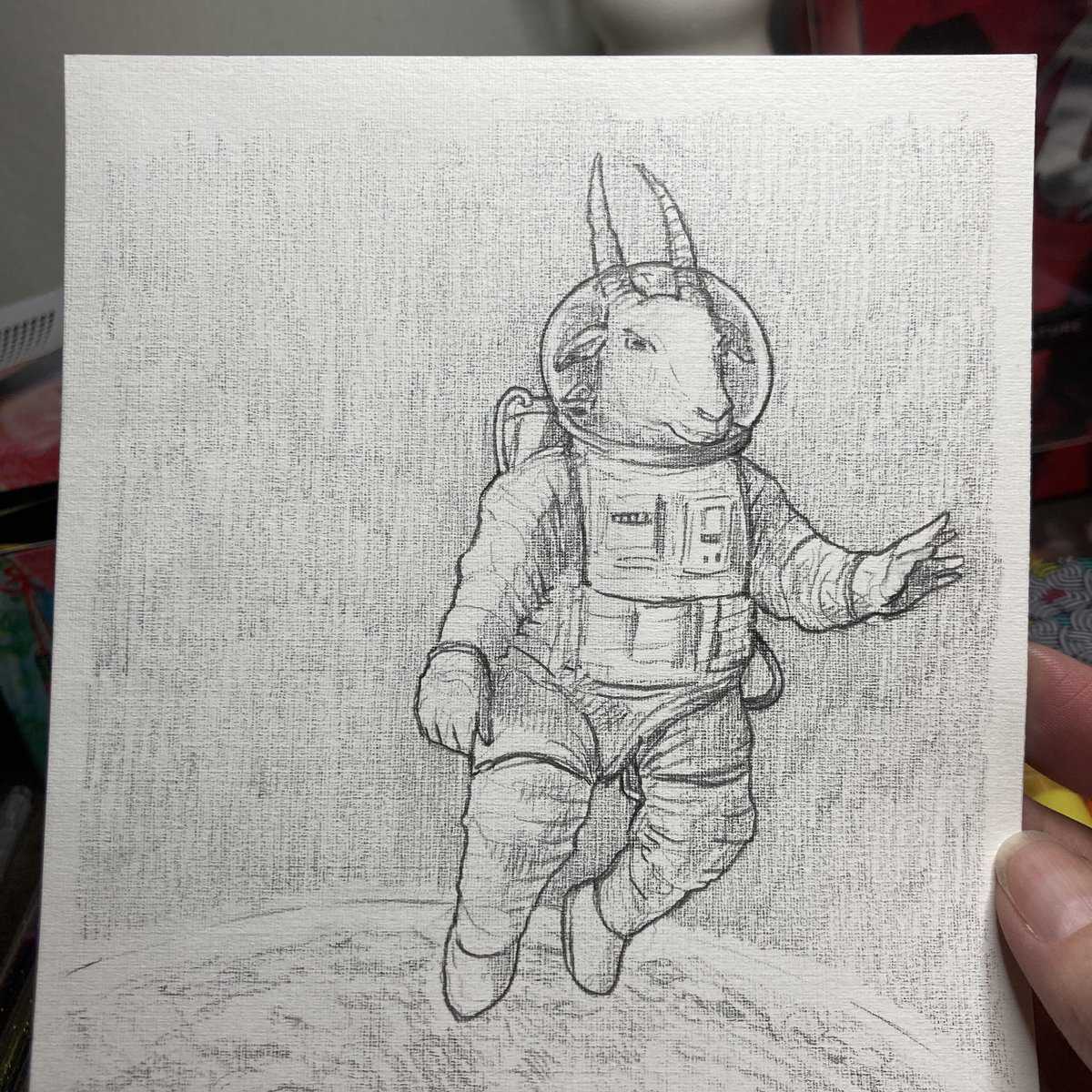
Considering how the drawing will “work,” which is important with fantasy images – in this case Baphomet needs a special helmet with holes for the horns. It can’t be a visor that opens and closes, because that would hit the horns. Also there are many options for space suits.
Too much thinking about whether the concept is “legit.” Star Trek is beaming people around and Star Wars has droids on wheels cruising around in deserts, so don’t worry about whether some attachment on a space suit is right. Sheesh! Everything comes from somewhere, though.
Now it’s in Procreate for the major shapes and facts. When the gesture of a drawing is good it tends to stay simple. Check for that. Is it overly complex? Does it feel balanced? Is there good information in there? Is there anything that feels unresolved or not researched enough? Is there any fudging?

One way to get a feel for a figure, especially when working digitally, is to see how it works as a silhouette. The character takes on its personality even without any details. This is reminiscent of the stencil work in street art.

Considering the image as a whole. In orbit above Earth, just hanging out up there. Placing the horizon. This is similar to under-painting in oils, putting the basics in there as a foundation. Just because it’s digital doesn’t mean we aren’t using methods that are hundreds of years old.
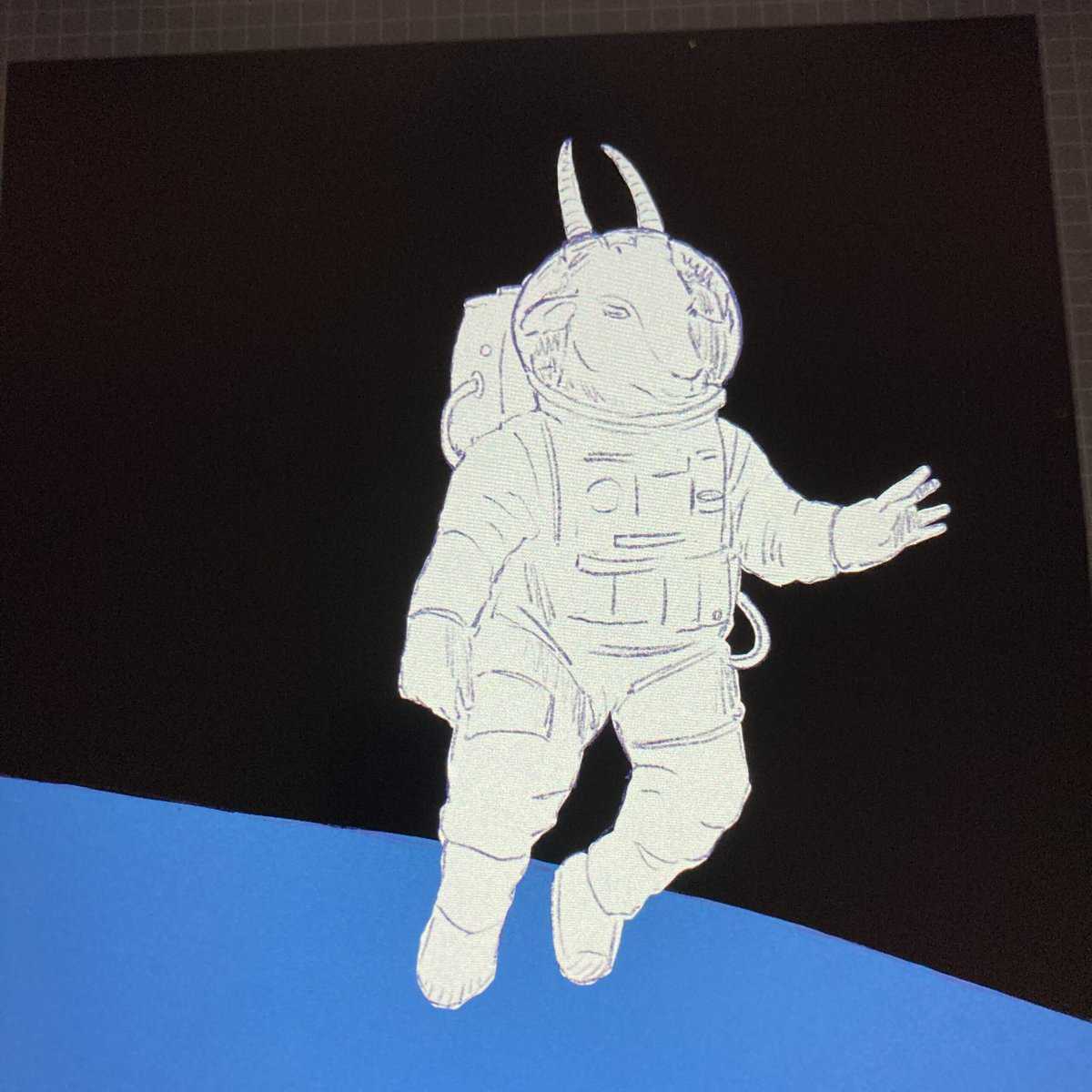
An illustration is going to have different color “environments,” such as the space suit and then Baphonaut’s head and face, and then Baphonaut’s horns which are a bit different material too. Attention to this gives the image its depth of story. The suit is white, and made of suit material, whereas Baphomet is kind of furry with mischievous eyes and the horns are made out of horn material. And then there’s Earth, and of course space, which at this proximity to Earth tends to just be very deep black.
In space there is hard light that’s not bouncing around off of objects because all the objects are too far away. That’s a special lighting quality. Look at examples of your lighting situation. Are you under a tree? Under water? In the shadow of something? Is it night time? Think this through when adding the broad outlines of how your light is going to work. Pick a light source, and stick with it. In this case the moon is bouncing some light from that left side.
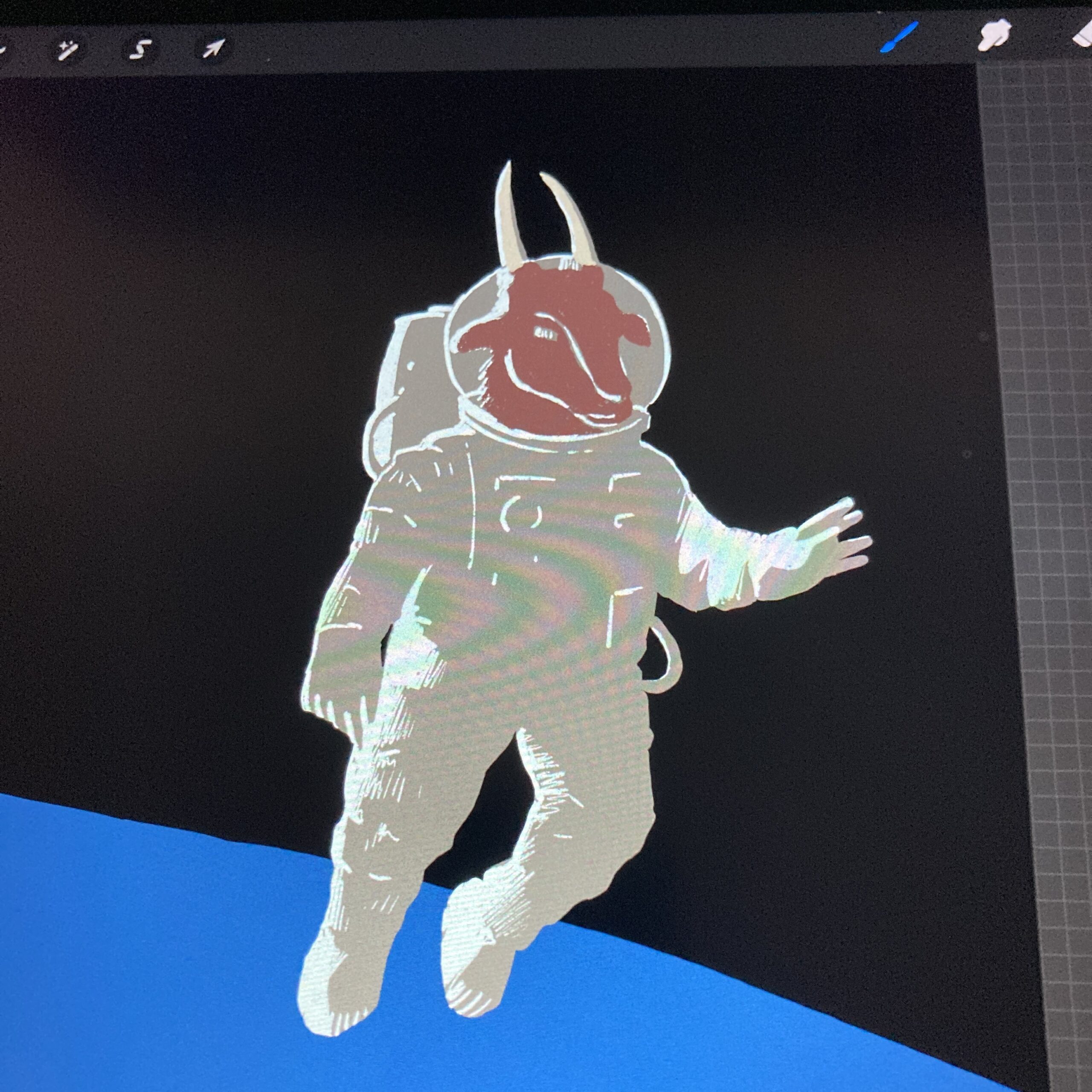
For Earth from space go to NASA or somewhere and look at examples. It’s easy to forget details, or start drawing or painting something the way your mind’s eye sees it, instead of how it is out in the lumpy world. For example the sun from the left is hitting some of the higher clouds but not the lower ones, and the horizon is bouncing light around but in a different way. None of the edges on Earth are as hard as they are on Baphonaut, because Baphonaut is in the foreground, and Earth is a whole entire planet.
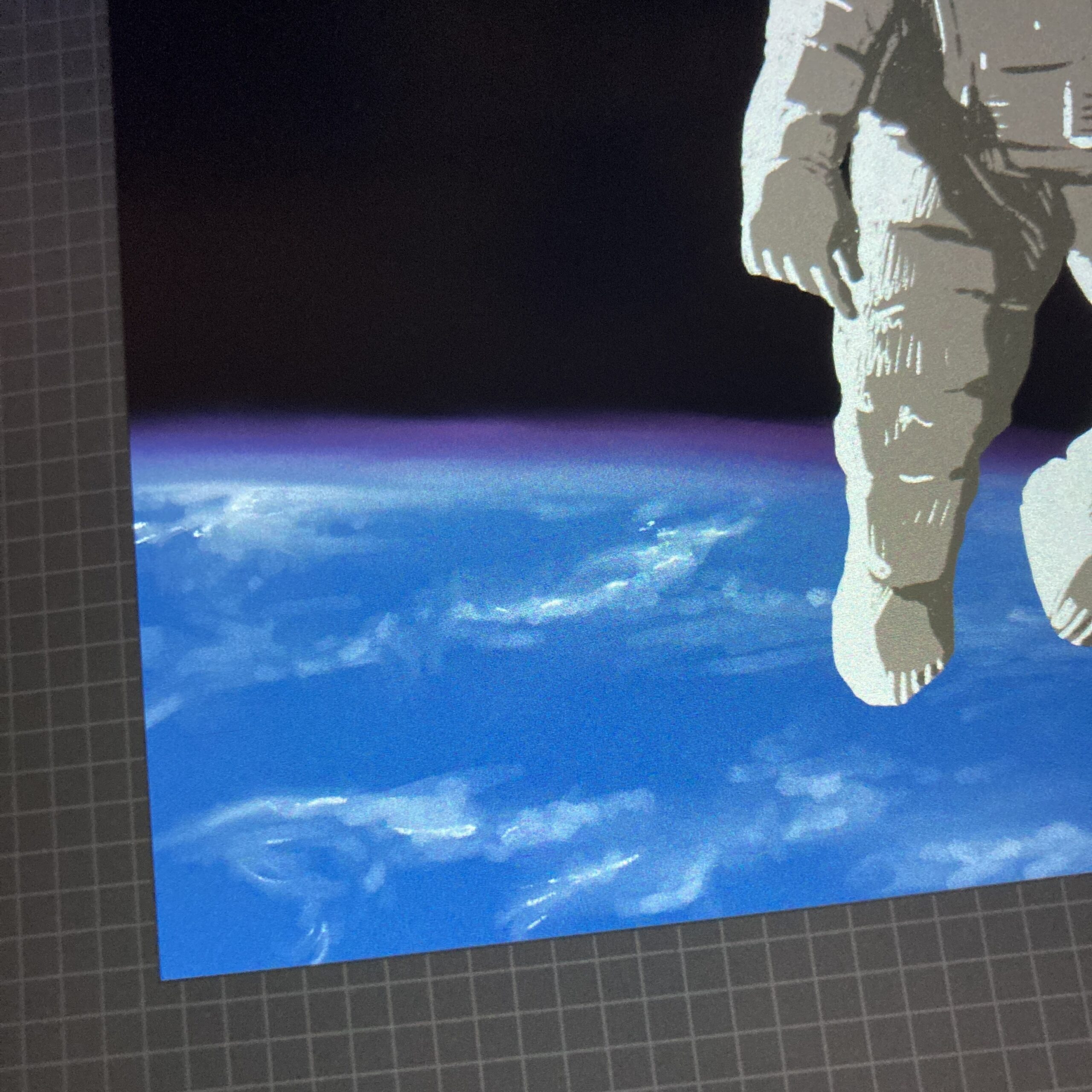
There is a moment when a drawing pops to life. There’s just enough information and it starts breathing. Look for this moment, be patient and let it happen. Always notice. It can get passed by if the drawing gets overworked, or if you are not backing out often enough, or if you are thinking more about what people might think of the end result, than you are about your care for the image. This can be a difficult mentality to maintain. If you overshoot just make a new layer or get a new piece of paper.
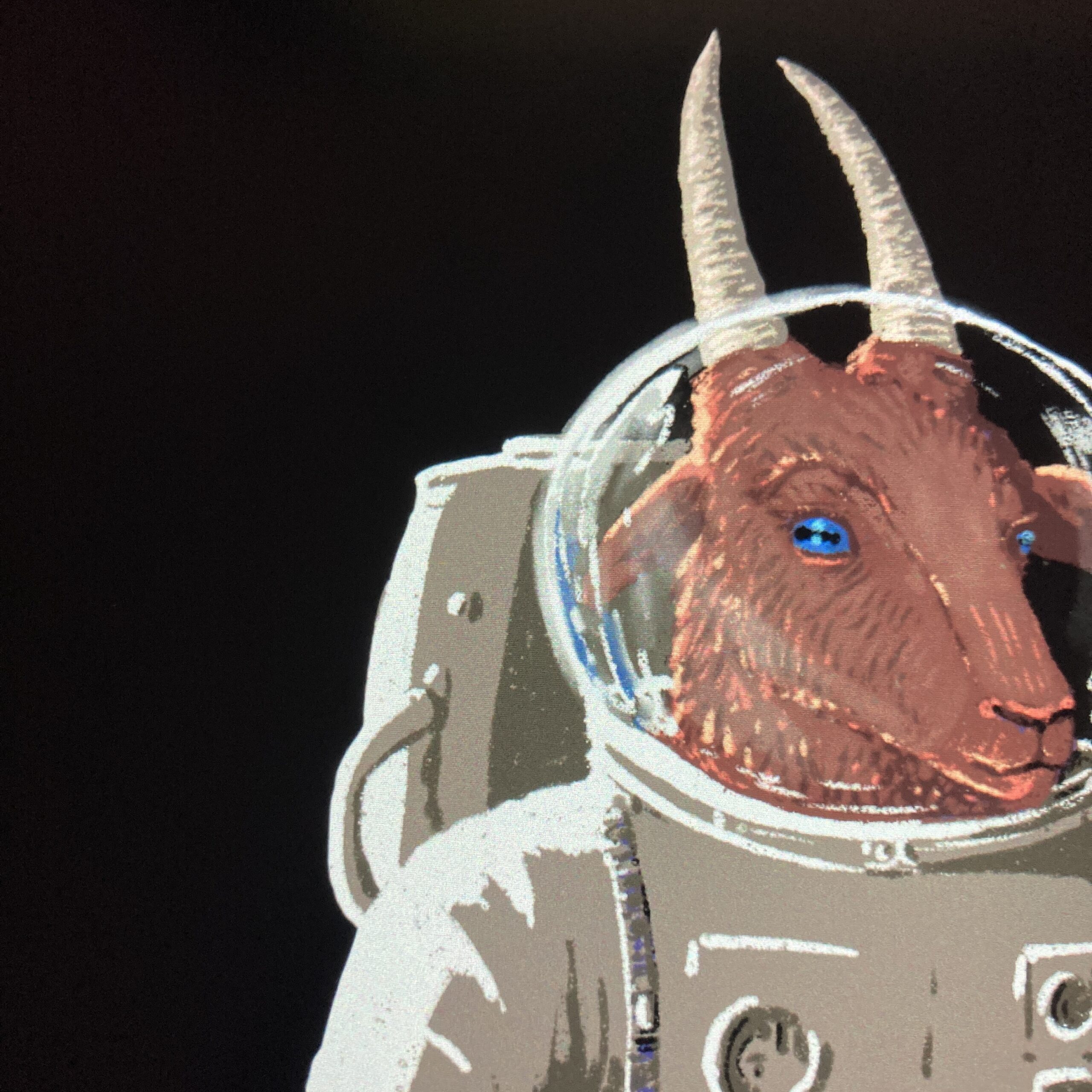
Some details punched in. Discovering things about how the glass of the helmet might reflect the blue of Earth. Important not to over-work it. If the light and volume are believable, if the character has popped to life, if your image feels lyrical, let it be. Let it have flaws. Let it be “wrong.” This is a story that you are telling, the way you are telling it.

Let’s see if it still feels alive and not overburdened with details, or expectations, or opinions. Joy and care come through, as do any other feelings you are having as you make an image, and you don’t want to paint or draw over those. Let them be there. Tell the story.
If you get a little mired, take a break. Pay attention to posture and breathing, because if you get too clamped down the drawing will too.
Take your time, take a moment, get to know your subject and particularly your lighting and volume aspects. Make a pencil sketch. Make several. Keep your breathing deep enough. Go for a walk. Allow your drawings to be alive like you are, because they are a part of you, whether they are a single line or an intricate etching or something in-between. That’s what we see when we look at someone’s art.
Baphonaut is available as a print in the print shop